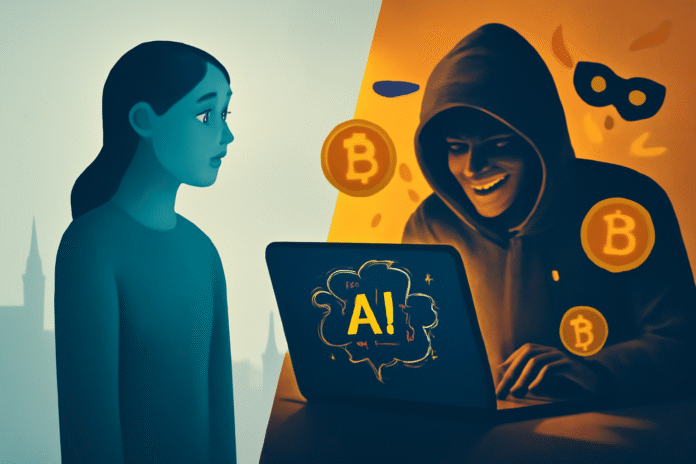Takeaways:
- AI is making crypto scams way more believable — including fake voices, videos, and support chats.
- New investors are especially vulnerable because the scams look legit and spread fast on social media.
- Slow down, question what you see, and double-check before sending crypto anywhere — it could save you big time.
You know that sinking feeling you get when something just feels… off? Like when a message pops up claiming Elon Musk is doubling Bitcoin if you send yours first—but this time, it sounds weirdly convincing? Yeah, that’s AI stepping into the scam game. And it’s making crypto fraud a whole lot scarier — and sneakier.
So, what’s happening?
Scammers have always been pretty creative, especially in the crypto world. But now, with AI tools getting better (and easier to use), they’re leveling up. We’re not just talking about shady emails or spammy YouTube ads anymore. We’re talking fake voice calls that sound like your boss, deepfake videos of crypto influencers promoting sketchy tokens, and bots that can mimic real customer support on Telegram.
It’s wild—and it’s working.
A Real Example That’ll Give You Chills
There was this one case where someone got tricked into sending funds after a video showed a well-known crypto analyst praising a new project. The video looked and sounded real—but it was completely fake. AI had cloned the guy’s face and voice. By the time anyone realized it wasn’t him, people had already sent thousands in ETH to a scam wallet.
And these deepfakes aren’t just floating around in the dark corners of the web. Some show up right on social media feeds—looking polished, professional, and believable.
It’s Not Just the Tech, It’s the Timing
What makes this even worse is that it’s happening during a time when more everyday folks are getting into crypto. They’re excited, they’re hopeful, and… well, they’re not always experienced. That’s exactly the type of person these scams are targeting.
Combine that with how fast things move in the crypto world—new projects, new tokens, constant FOMO—and you’ve got a perfect storm. Scammers know people don’t always double-check before clicking or sending. They just see the opportunity and jump.
My Two Sats (That’s Crypto Talk for Cents)
Honestly, it’s getting harder to tell what’s real and what’s AI-fueled noise. I used to think I was pretty sharp at spotting scams, but even I’ve had to pause lately and double-check voices in videos or read replies on X (Twitter) extra carefully. The tech is just that good now.
It feels like we all need to slow down a bit—not just in crypto, but in how we trust what we see online. Especially now that AI can basically throw on a mask and pretend to be anyone.




